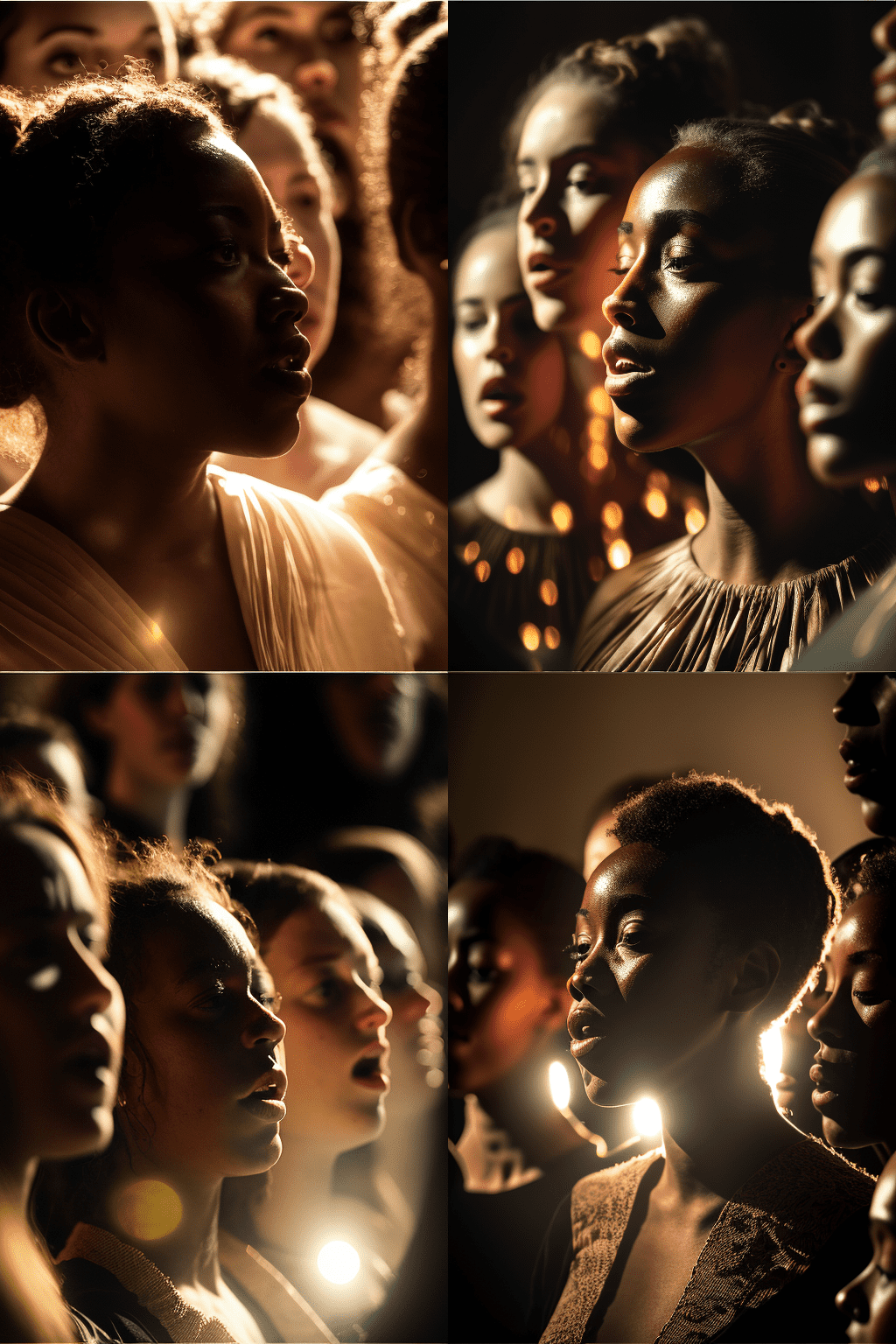As a singer, developing your sense of rhythm is essential for making it in the music industry. It’s vital to keep the beat not just while performing but also when collaborating with other musicians to create the best possible music. In this article, I will be sharing tips on how vocalists can improve their rhythmic abilities to enhance their live shows.
Looking for ways to improve your skills as a singer? Then expanding your rhythmic awareness should definitely be one of your top priorities! As an experienced vocal coach in the music industry, I’ve seen first-hand how working on rhythmic awareness has helped many talented performers stand out from the crowd. With these techniques, singers will gain the confidence needed to make sure their songs shine like never before.
Are you ready to take control of your sound and upgrade your performance? If yes, then let’s get started! Keep reading and find out what it takes for singers to master their rhythmic timing – and unlock new levels of creativity along the way.
Meaning Of Rhythmic Awareness
As musicians, we all have a deep desire to express ourselves through rhythm. It’s the key to unlocking our musicality and understanding how timing accuracy can be used to bring out the emotion behind every note. Rhythmic awareness is essential in creating meaningful music that captures the attention of listeners and expresses our innermost feelings with clarity.
Rhythmic expression involves having an intimate knowledge of beat counting, as well as being able to improvise within any given tempo or meter. This requires us to develop a greater sense of rhythmic awareness so that we can move freely between different rhythms without losing the flow or feeling in our performances.
By recognizing how each element affects our overall sound and developing techniques for controlling them, we are able to take full control over our musical direction. We’ll use this newfound ability to create something unique and powerful that speaks directly from the heart – allowing us to reach new heights both musically and emotionally. With these insights into rhythmic awareness, we’re ready to dive into the components of musical rhythm that help shape its structure and character.
Components Of Musical Rhythm
As singers, we must develop a strong sense of musical rhythm in order to truly express ourselves. To do this, it is important to understand the components that make up rhythmic patterns. First and foremost, there is the concept of a musical pulse. This is what keeps us grounded in time as we perform our songs. It can be felt as a steady beat or tempo within a song and helps us move forward through each phrase with confidence.
Once we have established the basic pulse, we can then start to explore variations in terms of tempo and dynamics. We can use these tools to create interesting rhythmic phrases that give our performance personality and depth. The rhythm section of any ensemble will also play an important role in creating dynamic rhythms for us to sing against. Working together with the other musicians allows us to add layers of syncopation techniques into our performances which further elevate the music beyond its simple structure.
The key takeaway here is that having a solid understanding of how different elements work together to form cohesive rhythmic patterns enables us to become more creative when performing them live on stage or recording in the studio. As such, every singer should take some time to explore various ways they can layer their own unique interpretation onto existing rhythms without losing their place in the overall flow of the music. By developing this kind of awareness, you’ll find yourself feeling more comfortable with your singing and able to come up with new ideas quickly and easily! With this knowledge now under your belt let’s move ahead towards exploring metronomes and click tracks – two powerful tools used by professional vocalists everywhere!
Metronomes And Click Tracks
Studies have shown that 85% of successful singers use rhythm practice to develop their rhythmic awareness. Metronomes and click tracks are invaluable tools for developing rhythmic accuracy, as they provide a consistent tempo control with exact time keeping.
Metronomes are popular devices used by vocalists to stay within the beat while singing or performing any type of music. They come in both digital and analog versions, allowing users to choose which one works best for them. Digital metronomes tend to be more accurate than analog ones, but some find the clicking sound produced by an analog metronome easier to keep track of when playing back a recording after practicing. Both types allow users to adjust the tempos so they can customize each song according to its needs.
Click tracks are also important tools for honing musical timing skills, especially among professional musicians who need to sync up with other band members during live performances or recordings in the studio. With these tracks, performers can hear what’s going on around them without having to look at a conductor or watch a video monitor constantly – making it much easier for everyone involved in the production process. Additionally, many bands now rely on click tracks instead of drummers because they offer more precise control over tempo changes throughout songs.
Using metronomes and click tracks is essential for improving rhythm accuracy and maintaining consistency between different takes when recording music in the studio. By taking advantage of these helpful tools, singers will soon find themselves mastering complex rhythms with ease – setting them up nicely for ear training exercises down the line!
Ear Training Exercises
Ear-training exercises are a powerful way to improve rhythmic awareness in singing. By developing rhythm recognition through ear-training, singers can more accurately interpret the rhythms of music and learn how to apply them with greater precision. Rhythmic dictation is an exercise that requires singers to listen carefully to a given pattern and then write down what they hear. This helps develop the singer’s ability to recognize patterns by hearing them.
Rhythm recognition games also help build rhythmic awareness. These games involve listening to various musical excerpts and guessing which ones have been altered or changed in some way, either by tempo or rhythmically. Such exercises help singers hone their skills at recognizing subtle changes in rhythm as well as learning how different rhythms sound when played together.
Finally, tempo recognition exercises provide another valuable tool for improving rhythmic awareness in singing. These types of exercises require singers to identify sections of music where the tempo has slowed down or sped up without any other changes in pitch or structure being made. Through such exercises, singers become better attuned to nuances within pieces of music and can apply this knowledge when interpreting songs during performances. With these tools firmly established, it’s time to explore body movement and timing — two critical components of excellent vocal delivery
Body Movement And Timing
Singers can sharpen their rhythmic awareness by incorporating body movement and timing into their practice. Moving the body in time to a musical groove helps singers develop an understanding of rhythm, which is essential for delivering powerful performances. Whether it’s swaying from side-to-side or tapping along with the beat, bodily movements help singers better understand how rhythms are constructed and performed.
Additionally, as singers move to music they become more aware of different types of phrases and accents within the song structure. This extra level of sensitivity allows them to shape their performance accordingly – creating dynamic sounds that stay true to the emotion behind each note. Singers who engage in this type of body movement often find themselves taking risks with notes and pushing boundaries in ways they wouldn’t have without physical accompaniment.
Finally, there are some practical tips for using body movements while singing: Start slow with simple head nodding or foot tapping, gradually increase complexity over time; isolate certain sections to focus on specific timing elements; try moving your arms instead of just legs; use both sides equally when possible; keep breaths steady but flexible; make sure all motions support vocal phrases instead of disrupting them. With regular practice sessions that incorporate these techniques, singers will be able to strengthen their rhythmic development and further hone their musicality. As a result, they will gain greater insight into understanding meter and time signatures when working out new material.
Understanding Meter And Time Signatures
Meter and time signatures are essential for developing rhythmic awareness as a singer. It’s important to understand the difference between musical meter and tempo notation, which is how we talk about beat subdivision in music. Meter describes patterns of strong or weak beats, while time signature tells us how many beats there are in each measure and what type of note gets one beat.
For example, 4/4 time has four quarter notes per measure – this means that every fourth quarter note is considered a downbeat (a stronger emphasis). 2/2 time has two half notes per measure – allowing us to count out loud “one-two” instead of counting by quarters. There are also other types of meters such as 3/4 or 6/8 that have different combinations of beats with their own distinct feel.
It’s helpful to practice singing along with metronomes set at various tempos so you can become familiar with different meters and gain an understanding of how they affect your performance. This will help you learn to recognize and internalize different rhythms more easily when sight reading new material. By becoming comfortable with these concepts, singers can build confidence in their rhythmic accuracy and work on perfecting their phrasing until it feels natural and effortless onstage.
Notation and music theory provide valuable tools for honing rhythm skills necessary for any singer striving for excellence in their craft.
Notation And Music Theory
As singers, it is crucial to understand the basics of notation and music theory. Note reading helps us become more confident in our ability to read rhythms accurately. In addition, learning how to recognize syncopation patterns can help us develop rhythmic awareness. Here are a few tips for developing your skills:
- Learn the notes on the staff.
- Practice note-reading drills with different time signatures such as 4/4 or 6/8.
- Familiarize yourself with basic syncopation patterns and practice them regularly.
These activities will help establish a strong foundation in rhythm reading which is essential for singing complex music and expressing yourself musically. Once you have acquired a good level of competency in these areas, you can start exploring different ways of interpreting rhythms through improvisation and composition techniques. This will enable you to express musical ideas that go beyond traditional notation and enrich your performances with unique personal touches.
Now let’s move onto developing syncopation and groove awareness!
Syncopation And Groove Awareness
Having a basic understanding of notation and music theory is an important foundation for developing rhythmic awareness as a singer. The next step in the process is to develop syncopation and groove awareness, which can help singers create more interesting rhythms when performing.
Syncopated rhythms involve emphasizing beats that are usually not accented in a measure or phrase. This helps break up the monotony of straight eighth notes or quarter notes being sung throughout a song. It also adds energy to a performance by creating contrast between lighter and heavier accents within each verse or chorus. To get started with syncopation, it’s helpful to practice feeling the beat rather than counting out loud. This allows you to focus on how your body responds musically to different patterns of rhythm.
| Pattern | Description |
|---|---|
| 1 & 2 & | Plays on every two beats |
| 1 e & ah | Alternates between 8th note and 16th note pattern |
| triplets | Three evenly spaced notes per beat |
| shuffle | Starts on upbeat of 1&2&3&4& |
These musical accents may feel foreign at first, but with practice they become second nature and allow for dynamic performances that capture listeners’ attention. As you experiment with various grooves and syncopations, try singing along with them using words from any given song so the rhythms start to stick in your memory. Practicing with other musicians is another great way to strengthen your skills while having fun exploring new ways of expressing yourself through rhythm!
Practicing With Other Musicians
Practicing with other musicians is one of the best ways to develop rhythmic awareness for singers. Working together in a rehearsal or live performance setting can be incredibly beneficial, as long as it’s done properly. Here are some tips on how to get the most out of this type of practice:
- Listen carefully and collaborate – When practicing with others, make sure to pay attention to what each person is doing so that you can create an accompaniment that complements them.
- Experiment and improvise – Don’t be afraid to try different rhythms and tempos while playing with others. This will help expand your rhythmic palate and give you more confidence when performing.
- Use technology – Technology can come in handy when rehearsing with other musicians. There are many tools available online that allow you to loop sections, mix tracks, adjust tempo, etc., which can all help refine your rhythm skills.
- Practice regularly – Make sure to set aside time every week to practice with other musicians. This will ensure that everyone involved stays sharp and keeps their musicality fresh.
Having strong rhythmic awareness is essential for any singer looking to perform at their best . Practicing with other musicians helps sharpen these skills in a way that can’t be achieved alone – from listening closely and collaborating, experimenting and improvising, utilizing technology, and consistently rehearsing together. With these tips in mind, singers have the tools they need move towards mastery of rhythm!
Performance Tips For Singers
Performance is an important part of a singer’s career. According to the National Association for Music Education, approximately 74% of students in grades K-12 participate in some type of music performance activity. Below are five key tips that singers can use to give their best performances:
| Voice Training | Stage Presence |
|---|---|
| Proper breathing exercises | Positive body language |
| Modulation techniques | Vocal projection |
| Pitch control | Eye contact |
Voice training helps singers properly project their voice and perform with more confidence. Learning proper breathing techniques will help regulate airflow when singing and keep the vocal cords at optimal tension levels for maximum effect. Additionally, modulation techniques such as vibrato and changing dynamics (loudness) can add depth and emotion to a song or phrase. Furthermore, pitch control is essential for achieving both accuracy and power while singing.
Stage presence requires performers to be aware of how they appear on stage during a performance. Singers should practice positive body language by standing tall, using appropriate facial expressions, and swaying or gesturing to the music if it feels natural. They should also practice vocal projection so that their voices carry out into the audience without overstraining themselves; this comes with practice! Lastly, eye contact is vital in connecting with your audience – make sure you’re making eye contact during sections where you want them to feel engaged.
When performing, it’s important to combine these tips together seamlessly so that audiences feel connected with the artists’ intent behind each song or piece. By combining technical skill from voice training along with engaging stage presence, singers will have all the tools necessary for truly captivating performances every time!
Frequently Asked Questions
What Are The Benefits Of Developing Rhythmic Awareness As A Singer?
Developing rhythmic awareness as a singer has many benefits. It can improve singing accuracy, and help singers better interpret music notation. Body movement is also enhanced through improved time keeping, making the performance of any song more natural and enjoyable. Here are some specific advantages that come with developing this important skill:
- Enhanced Musical Understanding – Increased rhythmic awareness allows a singer to better comprehend complex musical patterns in different styles of music. This understanding will make it easier to learn new songs faster and pick up on nuances such as accentuation or syncopation quicker than ever before.
- Improved Performance Quality – When musicians have an increased level of rhythm awareness, their performances become smoother and more consistent. The ability to maintain a steady beat helps to create a unified sound that is pleasing for both performers and audiences alike.
- Developed Creativity – With improved timing comes greater creativity when performing music. Singers who possess high levels of rhythmic awareness tend to be able to explore innovative ideas musically without having to worry about staying within strict parameters of tempo or meter – allowing them to truly express themselves artistically while still maintaining perfect accuracy in their delivery of the material they’re working with.
- Expanded Repertoire – Having developed one’s sense of rhythm opens the door for learning even more challenging pieces which might otherwise take longer due to lack thereof. Aspiring singers can now tackle tunes they never thought possible before thanks to refined musicality brought on by building strong rhythmic skills.
In short, increasing rhythmic awareness as a vocalist means gaining deeper insight into how one performs music and improving overall performance quality noticeably; enabling both beginner and experienced singers alike reach higher heights in their craftsmanship with ease!
How Can I Practice Rhythmic Awareness On My Own?
Are you a singer looking to hone your rhythmic awareness? Practice doesn’t make perfect, but it certainly helps! Developing a deep understanding of rhythm can open up new possibilities in your performances and offer exciting creative potential. Whether you are just starting out or have been singing for years, there are many tools available to help you practice rhythmically on your own.
If reading music notation is an area that needs improvement, then start small by familiarizing yourself with the basics. Once you become comfortable with the fundamentals of note value and counting time signatures, try challenging yourself further with more complex rhythms. Even if this isn’t something that comes naturally at first, commit to practicing each day and overtime your accuracy will improve drastically.
In addition to reading music notation accurately, body movement exercises can also be beneficial when working on developing rhythmic awareness as a singer. Practicing clapping along to different tempos or playing around with basic drum patterns using your hands or feet can help retrain your muscle memory so that feeling the beat becomes second nature. It may even be helpful to record video footage while completing these exercises so that any areas needing attention can be identified quickly and easily corrected over time.
Rhythmic awareness is an important skill for any musician and one which requires dedication and commitment in order to master it fully. By making use of all the tools available – from music notation reading right through to body movement exercises – singers everywhere should find themselves well placed to take their craftsmanship next level!
What Techniques Can I Use To Improve My Rhythmic Accuracy?
I’m sure many singers have asked themselves, what techniques can I use to improve my rhythmic accuracy? Getting better at accurately hitting the correct rhythms in a song is an incredibly important part of singing. Fortunately, there are plenty of ways you can practice developing your rhythmic accuracy.
The first technique that comes to mind when it comes to improving rhythmic accuracy is using music notation techniques. Being able to read and understand musical notation allows singers to precisely hit every note with precision. It also helps them gain knowledge on how different notes should sound together as well as how they relate rhythmically with each other. Additionally, learning how to sight-read sheet music will further help singers develop their sense of timing while performing songs.
Another way for singers to improve their rhythmic accuracy is by utilizing body movement techniques such as clapping or tapping along to the beat of the song. This method forces them to focus more closely on the rhythm and become aware of any discrepancies between the actual tempo of the song versus where they might be offbeat. Moreover, this type of exercise encourages musicianship and helps them get accustomed to staying coordinated even during complex passages in which multiple elements need to come together simultaneously.
By practicing these approaches regularly and consistently, singers will soon find that their ability to stay true to the desired rhythm has dramatically improved! With some dedication and patience, anyone can begin mastering their own inner timekeeper – so go ahead and give it a shot!
What Is The Best Way To Learn How To Read Music Notation?
Learning how to read music notation is an essential skill for any singer. It’s the foundation of understanding rhythm and musical structure, which helps a singer become more musically aware. So what are the best ways to learn how to read music notation?
Firstly, it’s important to gain an understanding of basic music theory. You should familiarize yourself with note values, rests and clefs so you can make sense of sheet music when you encounter it. Once these basics have been mastered, you can begin applying them in real-world scenarios such as playing songs or transcribing melodies from recordings. Understanding the fundamentals will help you quickly pick up more advanced techniques like sight-reading and improvisation.
Another great way to learn how to read music notation is by practising regularly with a teacher or mentor who has experience in teaching this subject matter. This type of one-on-one instruction allows students to ask questions and receive direct feedback on their progress, helping them develop their skills faster than if they were self-taught. Additionally, having someone knowledgeable guide your learning journey ensures that there are no gaps in your knowledge base due to lack of practice or incorrect technique – both common pitfalls for those pursuing independent study routes.
As well as seeking out personalised tuition, exploring different methods of learning is another useful approach towards mastering music notation. For example, online courses are becoming increasingly popular amongst learners looking for flexible yet comprehensive options; many of these classes provide interactive activities designed to engage participants while also giving them tools to apply later when reading written scores independently. There are also plenty of resources available offline such as books, tutorials and worksheets – all excellent methods for enhancing one’s ability when it comes to deciphering musical symbols accurately and confidently!
How Can I Use Body Movement To Help Me Stay In Time?
Imagine a dancer performing graceful movements to the rhythm of music. Now, imagine yourself being that dancer—moving your body and using it as an anchor for your rhythmic awareness! This is exactly what you need to do in order to stay in time when singing. Developing this type of rhythmic awareness can help singers gain more confidence in their craft.
The key to staying in time is understanding the basic principles of music notation, such as counting beats and bars, so that you can practice techniques like clapping or tapping along with songs. It may seem intimidating at first, but if you take small steps and persistently practice, eventually these concepts will become second nature. In addition to learning how to read music notation, also use body movement when practicing songs. Movements like swaying from side-to-side or marching on spot while keeping count will give you extra support while developing your rhythmic awareness.
By combining both musical knowledge and physical engagement during rehearsals and performances, singers will be able to maintain a better sense of timing while they sing. So don’t forget: keep moving your body – not just your voice – when trying to stay in time! As long as you keep up with regular practice sessions and combine them with body movement exercises, soon enough you’ll find yourself grooving away without worrying about whether or not your behind the beat!
Conclusion
Rhythmic awareness is an essential skill for singers of all levels, and developing it can open up a whole new world of musical possibilities. With the right practice techniques and some dedication, you’ll find yourself able to stay in time with ease and express your music with greater clarity than ever before.
The best way to get started is by understanding the basics: familiarize yourself with notation, listen to recordings to develop your ear for rhythm and timing, use body movement as a tool to help keep in time, and practice consistently with simple exercises that will hone your ability to feel when you’re off-beat. As you progress through these steps, you’ll reach more advanced rhythmic challenges such as syncopation or polyrhythms. Think of each one as a mountain waiting for you to climb – but don’t worry; if you take things slow and steady, soon enough you’ll be standing on its peak enjoying the view!
So whether you are just starting out or already have some experience in singing, making sure your sense of rhythm is sharpened should always be at the top of your list. Not only does this ensure that every note is delivered exactly how it was intended – like a true master craftsman – but it also allows space for joyful improvisation where both singer and listener can delight in spontaneous moments together.










